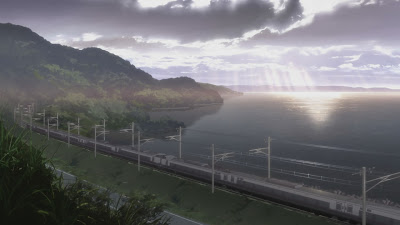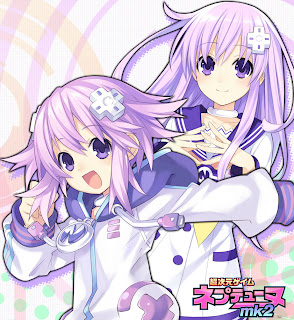When watching an Anime or reading a Manga series, one of the things that people notice is the predominance of mass transit. Japan has a rich system of mass transit, with a mix of high-speed rail, commuter rail, and subways that connect the entire country together. For people in the West, especially in the United States, this dependence on mass transit is completely foreign to us. The long history of the United States chronicles the rise and fall of mass transit and the rise of suburban sprawl and automobile dependence. In this edition of culture shock, I will explore Japan’s rich mass transit system and explain why we Americans see it as foreign, and I will delve into the special case of mass transit in Southern California.
Mass Transit in Japan
When watching an anime or reading a manga, it becomes quite apparent how ubiquitous mass transit is. In almost every single anime or manga out there, light rail, commuter rail, subways, and high-speed rail are showcased as the main mode of transportation to go from place to place. The ubiquity of mass transit in anime and manga is no accident; Japan has one of the most extensive mass transit systems on the entire planet. It is one of the rare places that have a mass transit system that is so well-developed that one can eschew a car and easily move from place to place.
 |
Mass transit is everywhere, even in
Infinite Stratos. |
In the late 1800’s rail transportation was very important in the development of Japan. The country had few natural resources, so it was important to move large numbers of people using as little fuel as possible. The dependence of rail transportation also affected the growth and development of the major Japanese cities. Many of the major cities in Japan grew around major train stations, which in turn made it popular to move from city to city using rail transport. World War II left Japan’s mass transit system and city in a mess, to move people from place to place quickly, it became top priority for the Japanese government to build a massive network of rails. The problem was that the post-war left the country with little materials to rebuild mass transit. It wasn’t until the 1960’s that mass transit in Japan hit a renaissance, with the development of the high speed train known as the Shinkansen. The popularity of the Shinkansen led to massive investing in Japan’s rail system. Japan currently has 14,662 miles of rail, with over 10,321 miles of rail being electrified. Japan’s rich history and dependence on rail transportation is unlike any country in the world.
 |
The girls of K-On used mass transit
in several episodes. |
The importance of mass transit cannot be emphasized enough; due to the dependence of mass transit Japan has a unique culture surrounding mass transit. Japan’s train lines are known for their punctuality. Late arrivals for trains are so rare that “delay certificates” are handed out to passengers when they do happen. Due to the heavy use of mass transit, there are some issues with mass transit in Japan. Rush hour crowds can get so packed that people have little space to maneuver. The first issue is the groping of women, normally done by a male passenger. Passengers are reluctant to complain about it, so it happens frequently enough that female only passenger cars had to be implemented during rush hour. The second issue is the number of suicides that happen on the rail tracks. Due to the speed of the trains and their ubiquity in Japan, the person committing suicide dies quickly without going long distances. Since mass transit is important in Japan, there has been good and bad aspects of culture that has been developed in the popular media of manga and anime due to the importance of mass transit in Japan.
Mass Transit in America
Americans are known as “car loving” people who depend on cars. Due to the dependance of automobiles in the United States, the dependence on mass transit to us is seen as very foreign. In America, we are stuck in an endless spiral where suburban sprawl makes it inefficient to use mass transit, so cars are used, and as more people use cars, there is more congestion on the roads. Congestion in turn forces people to move further from the main urban centers and it creates more congestion. As people are stuck in congestion they complain and they ask for more road expansion which comes at the cost of mass transit, bicycles, and other forms of alternative transportation.
 |
| New York Subway |
Mass transit to an American elicits strong emotions from various sides. To many people it is seen as a mode of transportation for the lower class who couldn’t afford an automobile. For those in the concentrated urban areas it is seen as a necessity so that one won’t be stuck in slow-moving city traffic. Those in the rural areas will see mass transit as a waste of taxpayer dollars. The variety of viewpoints on mass transit is attributed to the fact that in general, mass transit is horrible in the United States. Due to the popularity of the automobile through the implementation of mass production by Henry Ford and the illusion of individuality that was marketed by General Motors, the cityscape of the United States has changed forever. Due to the “white flight” that happened in the early 1900’s, people fled from the city centers to suburban outskirts. The fleeing of the middle and upper class from the cities also meant that businesses followed the people out of the city centers. They started building these suburban areas “sprawled” out so that people can have space. At the same time, the adoption of the automobile started decreasing ridership in the rail system. Due to the development of the modern American suburban life that was centered on the automobile, it became difficult to move people using mass transit. As time moved on, many light rail systems started going into disrepair, and many of them were dismantled in favor of more highways.
 |
Cult of the Car, it can bring you
sexy women and can improve your life |
In America, it is a foreign idea to many of us because it is almost impossible to move from place to place without using a car. The story of modern America is the story of the dependence of the automobile. Our dependency on the automobile gives the American culture a “cult of the car.” It is almost seen as a rite of passage in many families the day their teenager first gets their drivers license. In many social groups, people question those who do not have a car, as if it was unnatural to be without one. Car companies spend billions of dollars advertising a car to appeal to our base instincts of survival, sex, and envy. Since most of the rail systems were dismantled and the suburban landscape makes it hard to move without a car, it would be extremely expensive to rebuild the mass transit system we once had. Even now, massive transportation projects using mass transit can’t get developed without having some sort of huge controversy.
Southern California and the Rails
Southern California is a special case; I always seem to get a shocked response whenever I would point out that Southern California had one of the greatest mass transit systems in the United States from 1895 to 1951. With over 1,200 miles of track, the Pacific Electric was considered was one of the greatest mass transit systems on the entire planet. It was said that leaders from New York and London went to Southern California and they would use the Pacific Electric as inspiration to develop the incredible London Underground and the extensive New York Subway system. Many major cities were developed around the Pacific Electric stations.
 |
Pacific Electric trains, better known
as the "red cars" |
That brings me to the big question, if the Pacific Electric was so amazing, why is it that Southern California is one of the most congested freeways on the planet with more cars per capita than any single area in the world? The answer is very complex; I wrote a 92 page undergraduate thesis that explains the story. Pacific Electric was owned by Henry Huntington, when he made the Pacific Electric, he used the Pacific Electric to make profits off of property development. The Pacific Electric was made as a loss leader; it only made profit only a few times in its existence, subsidized by real estate development. When Henry Huntington left the Pacific Electric, the company hemorrhaged money. With the rise of the automobile creating heavy traffic, making mass transit run slow, people began to drift away from mass transit. Then the freeway system was built over the tracks of many major Pacific Electric lines. The arrival of the freeways and the suburban sprawl led to the destruction of the Pacific Electric. In April 9, 1961, the last leg of the Pacific Electric was destroyed and replaced with roads.
Right now, Southern California is going a renaissance with the light rail. The Metro has created 5 major train lines called the Gold, Red, Purple, Expo and Blue lines that are the spiritual successor to the Pacific Electric. Much of the track used by these light rail and subway are old track that was used by the Pacific Electric. With only 79.1 miles of track, it is only but a shadow of the giant 1,200 mile Pacific Electric system.
 |
The Red Line, the modern successor
to Pacific Electric. |
Why do I bring up Southern California? The reason is simple, of all the places in the world; Southern California would have been very similar to the current Japanese Mass transit system. The Pacific Electric cover more track in 1910 than all the mass transit systems in the world at the time. Had the Pacific Electric been developed instead of curtailed, the people of Southern California wouldn’t find the rail dependent culture of Japan as foreign as we see it now. Due to the nature of Southern California’s development between 1895 and 1930, the city network in California was very similar to Japan. There was a very similar path that they followed; it only diverged when the government of Japan heavily invested in rail when the government of California decided to ignore it. As foreign as we see Japan’s rail network system now, our destinies could have had a similar fate. A fateful government decision long before our time separated our two destinies, which is why Mass transit is a culture shock.
Culture Shock Series
Culture Shock #1 - School Uniforms















Comments